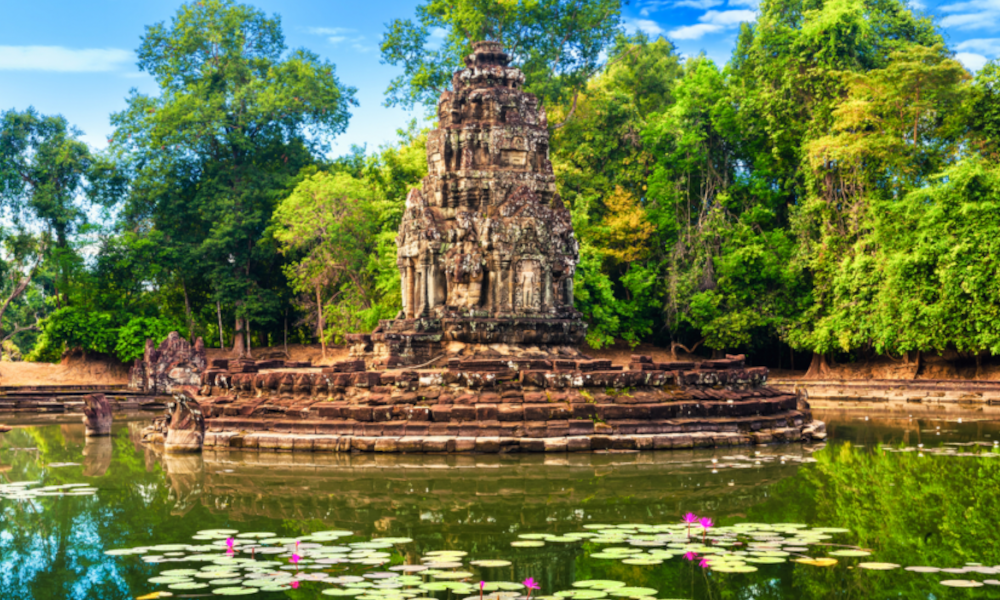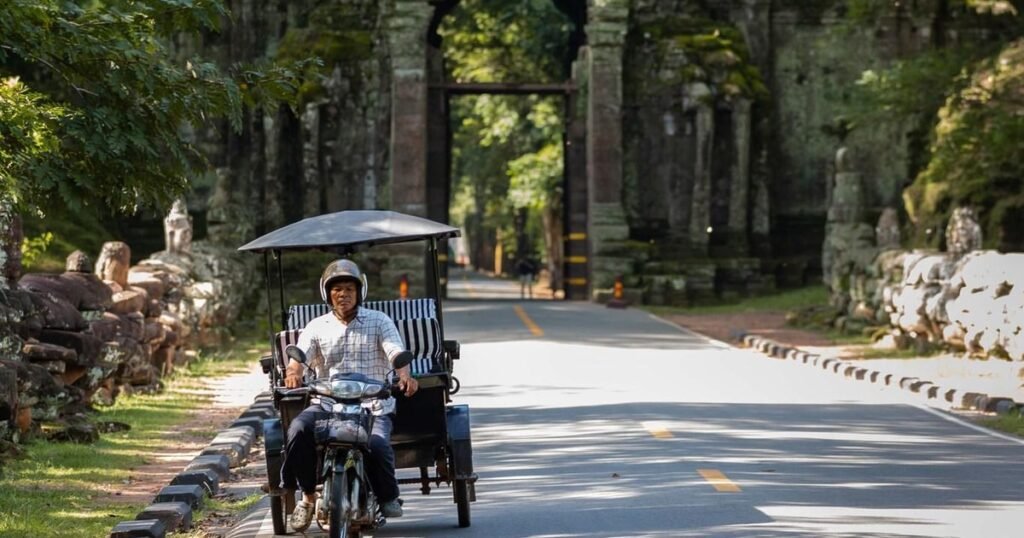Neak Pean Temple

Neak Pean, also referred to as “Neak Poan” is a Buddhist temple located on a circular artificial island within the Jayatataka Baray. This structure was commissioned by the renowned King Jayavarman VII during the mid-12th century.
Initially, the temple was conceived as a hospital, with the belief that bathing in its pools could heal ailments. The four pools are symbolically associated with the elements of wind, fire, water, and earth.
Today, Neak Pean is included in the Angkor Wat Grand Circuit Tour and attracts numerous visitors from around the world.
Experience a private Tuktuk tour of Angkor Wat and its neighboring temples. Discover the grandeur of Angkor Thom, Ta Keo, Banteay Kdei, and additional locations...
Layout and Design
Nean Peak is a sizable pond measuring 70 meters in width, encircled by four smaller ponds and featuring a circular island at its center. This island consists of seven tiers constructed from laterite and is situated within the middle pond. At the heart of the island stands a small tower dedicated to Avolokitesvara.
The central island has a diameter of 14 meters. The tower, or sanctuary, located at its center, is flanked by two serpents known as nagas, which guard the eastern entrance to the temple. On the western side, the serpents’ tails are intertwined, giving rise to the temple’s name – “The Entwined Serpents.”
Originally, when the temple was constructed, there were doors on each side of the sanctuary. However, over time, these entrances were sealed, leaving only the eastern door accessible. The false doors are adorned with carvings of Lokeshvara, a Buddhist deity associated with healing. Additionally, the eastern entrance features a representation of Buddha.
History of Neak Pean
Neak Pean was constructed by King Jayavarman VII during the 12th century as a Buddhist temple. It is believed that the site served as a hospital, where individuals could bathe in one of the pools to achieve healing from ailments. The four pools symbolize the elements of water, earth, fire, and water.
These pools are interconnected to a central pool, which is a representation of Lake Anavatapta located in the Himalayas, via a stone channel. Each channel is guarded by a statue of one of the Four Great Animals: an Elephant, Bull, Horse, and Lion. Each channel corresponds to the head of one of these great animals, with the exception of the eastern channel, which features a human head in place of the bull.
At the time of the temple’s construction, the sculptures of the four heads were positioned on the lake’s floor. These sculptures remain visible during the dry season when water levels recede, but they are entirely submerged during the rainy season.
Location & How to Get There
Neak Pean is situated at the heart of the Preah Khan Baray, an ancient reservoir referred to as Jayatataka. It lies approximately 1 kilometer to the east of Preah Khan, with Prasat Prei and Banteay Prei located to the northwest. To the north, one can find Krol Ko, while Ta Som temple is positioned to the east.
There are two routes to access Neak Pean. Visitors may approach from Angkor Thom in the east or Ta Som in the west.
For those traveling from Angkor Thom, exit the ancient city via the North Gate. Afterward, turn right past Krol Romeas and the Preah Khan temple. Proceed along the road adjacent to the baray until you arrive at the entrance to Neak Pean on your right.
Conversely, if you are approaching from the west, turn right from Apsara Road towards Srah Srang and continue towards East Mebon. Continue heading north to Ta Som, then make a left turn at the end of the baray. Follow the road, and Neak Pean will be visible on your left.

